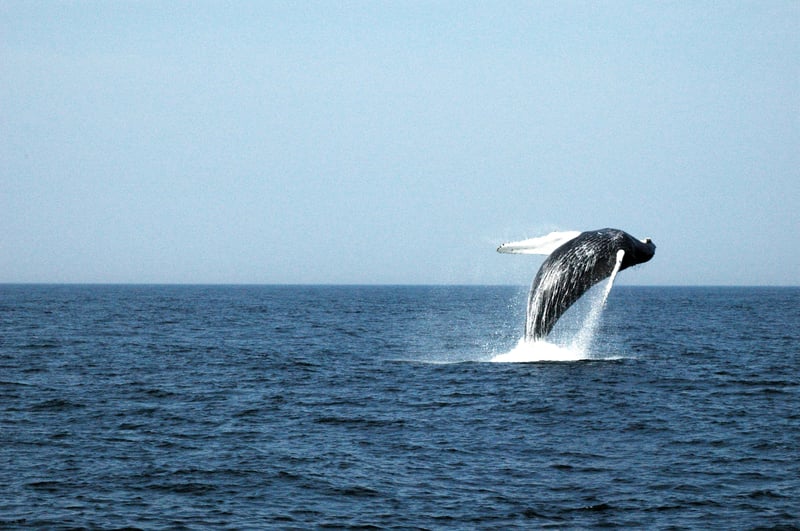
The complex lives of whales: Group living, culture and singing
News
Gemma Carder, our Sentience Manager, discusses social bonds and group activity. Whales come in many different shapes and sizes, and inhabit most of the world’s oceans.
They’re intelligent, sentient beings, engaging in many complex and fascinating behaviors. Scientists have been documenting their incredible behavior for many years. There is still much to learn, but we do have some insight into the inner lives of whales!
Social bonds, and baby sitters
Whales are social creatures; many species have strong bonds with the rest of their pod, and rely on each other for survival. Amongst sperm whale societies, when mom is busy, all other members of the group escort the calf to keep him or her safe (Gero et al 2013). However, they have one primary ‘babysitter’. The primary baby sitter takes on the role of being the ‘protector ‘while mom is deep diving and foraging. This commitment, and duty of care is not unnoticed by the rest of the group. The baby sitter is highly valued and has a high social status amongst the rest of the group (Gero et al 2013).
Resident orcas, who live in the north-eastern part of the Pacific Ocean live in one of the most stable groups that have currently been documented in mammals. In this group male and female offspring have seen to travel with their mothers throughout their lives. Furthermore, dispersal from their family hasn’t been recorded for over 25 years (Weiss et al 2006).
Vocal traditions and picking up new tunes!
For years, researchers have examined the songs of whales, due to the fact that they are so complex and fascinating. The findings surrounding whale songs are truly amazing!
Research has shown that humpback whales have distinct songs depending on which oceans they inhabit (Noad et al 2000). Humpbacks have also been seen to pick up new songs. Those living in the Pacific Ocean off the Australian east coast, have been seen to completely change their songs in response to new singers that have come from the west coast. The ‘east coast’ whales adopted the song of those from the ‘west coast’, demonstrating their remarkable learning abilities. This particular phenomenon has been classed as a ‘cultural revolution’ (Noad et al 2000). Regional variations in vocalisations are quite unique amongst mammals, and are more commonly seen in birds (Ford 1991). Furthermore, Sperm whales and Orcas, which live in stable groups have vocal repertoires known as dialects, which are unique to their pods (Riesch et al 2006).
Unfortunately, abandoned fishing gear is injuring and killing thousands of whales and other marine animals each year. Please support our Sea Change campaign to protect ocean wildlife.
Further reading:
Ford J .1991. Vocal traditions among resident killer whales (Orcinus orca) in coastal waters of British Columbia. Canadian Journal of Zoology 69:1454–1483.
Gero S, Gordon J, Whitehead H .2013. Calves as social hubs: dynamics of the social network within sperm whale units. Proceedings of the Royal Society B: Biological Sciences 280:20131113.
Noad MJ, Cato DH, Bryden MM, et al .2000. Cultural revolution in whale songs. Nature 408:537–538.
Riesch R, Ford JKB, Thomsen F .2006. Stability and group specificity of stereotyped whistles in resident killer whales, Orcinus orca, off British Columbia. Animal Behaviour 71:79–91.
Weiss BM, Ladich F, Spong P, Symonds H .2006. Vocal behavior of resident killer whale matrilines with newborn calves: the role of family signatures. The Journal of the Acoustical Society of America 119:627–635.
For years, researchers have examined the songs of whales, due to the fact that they are so complex and fascinating. The findings surrounding whale songs are truly amazing!